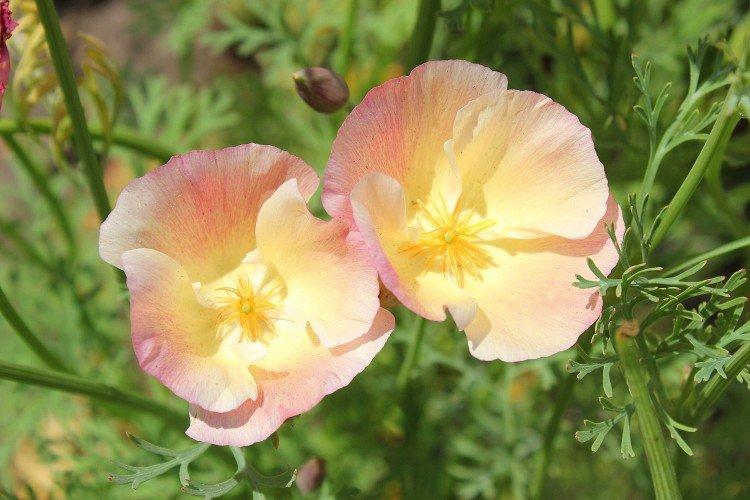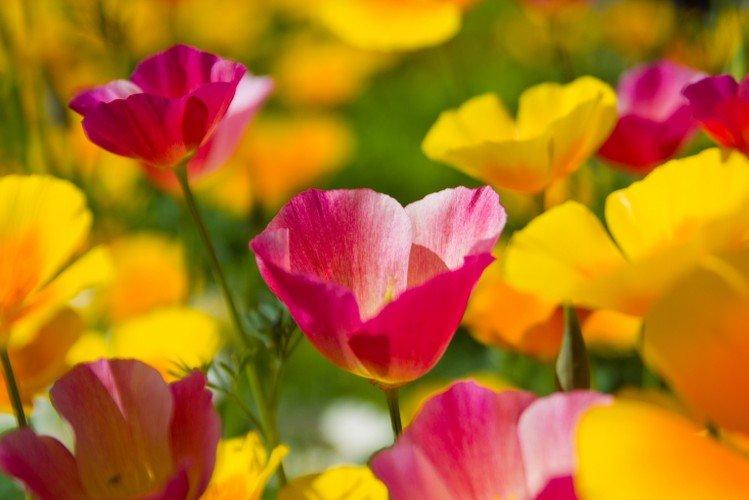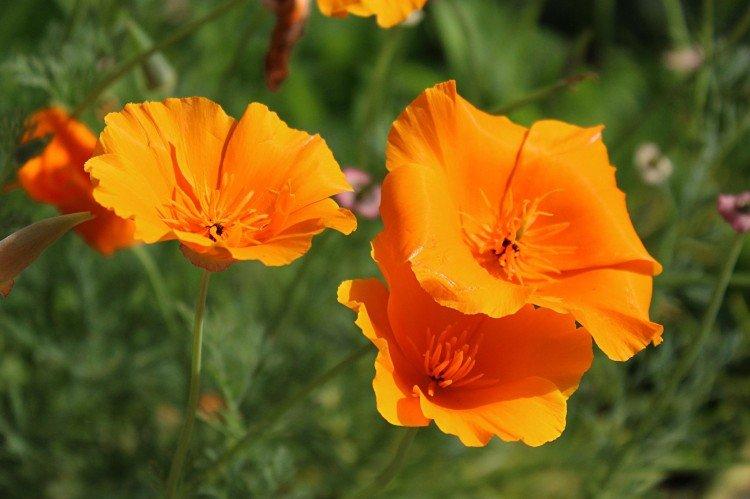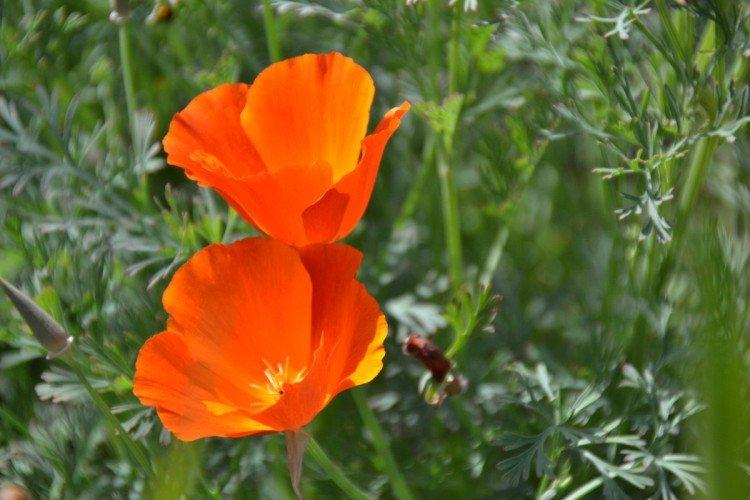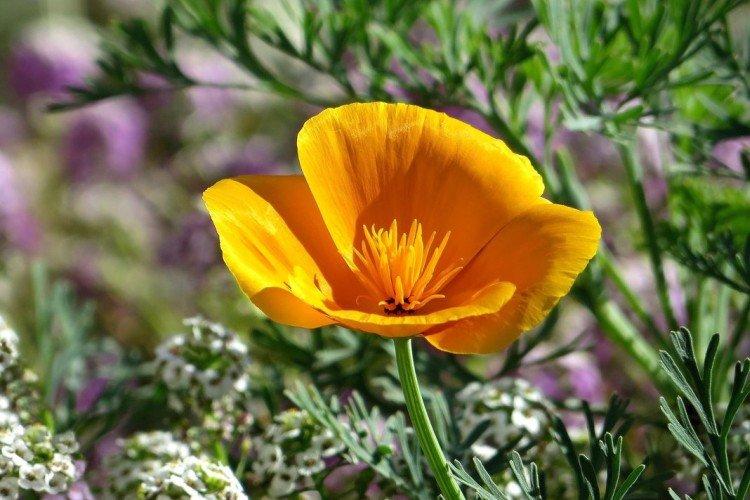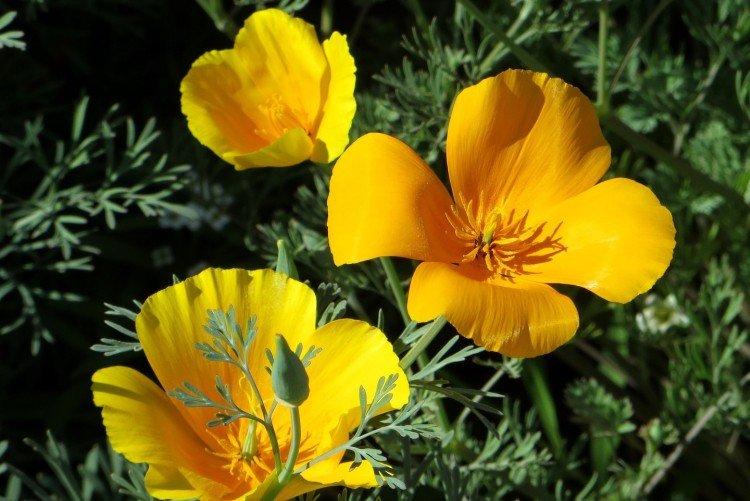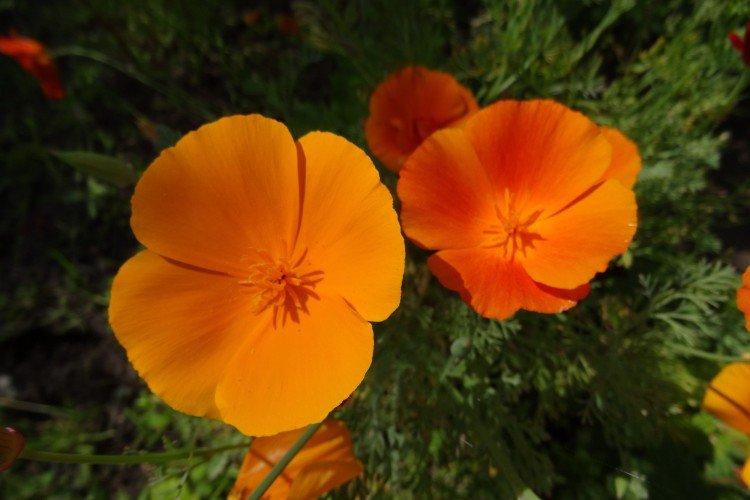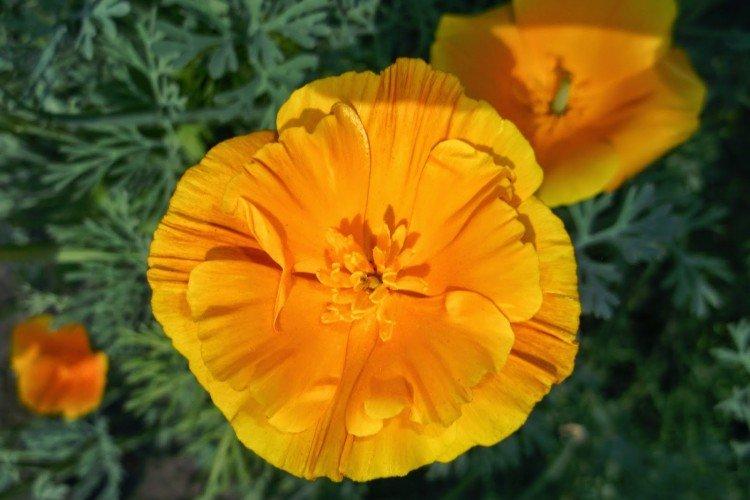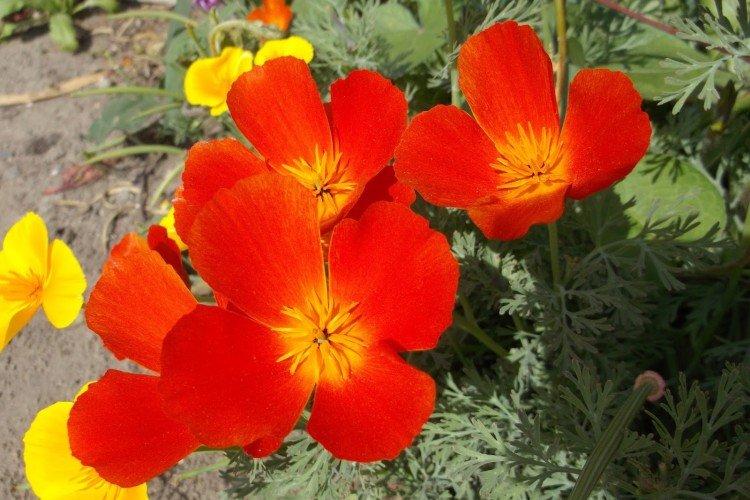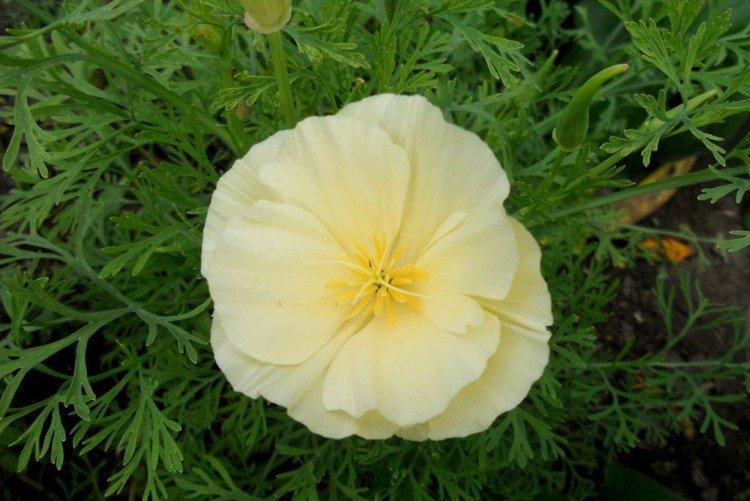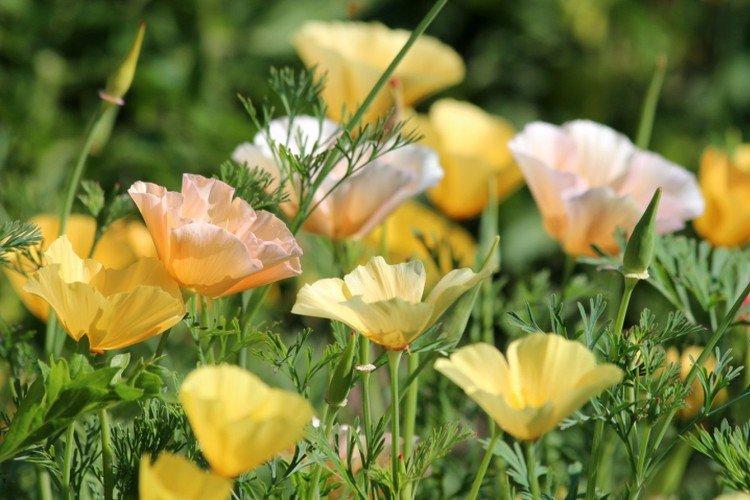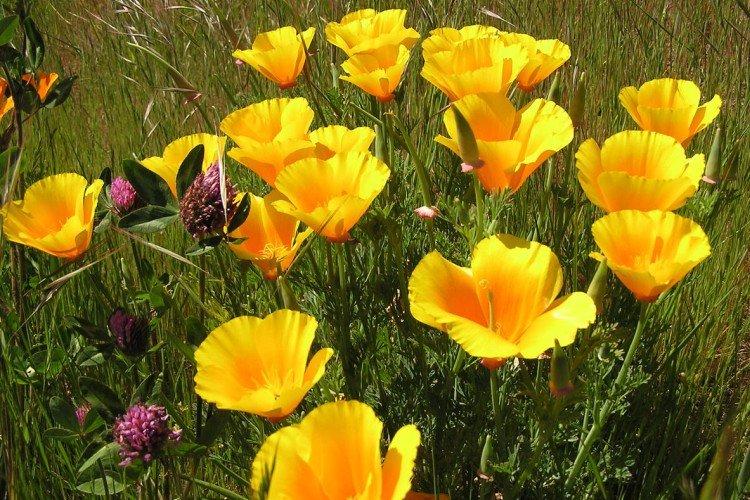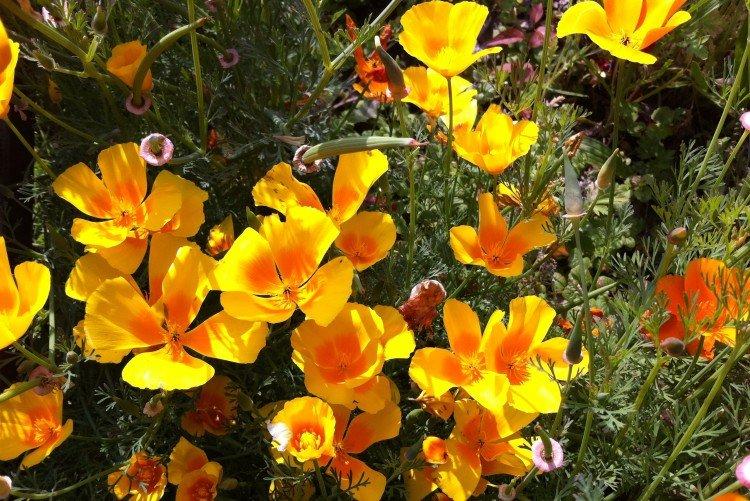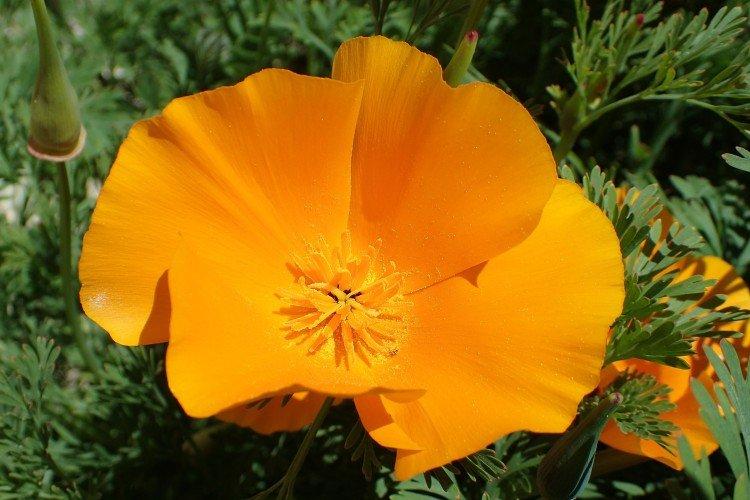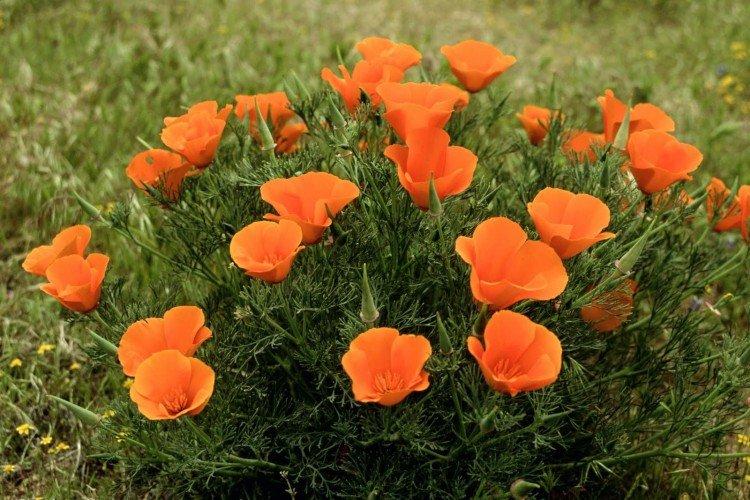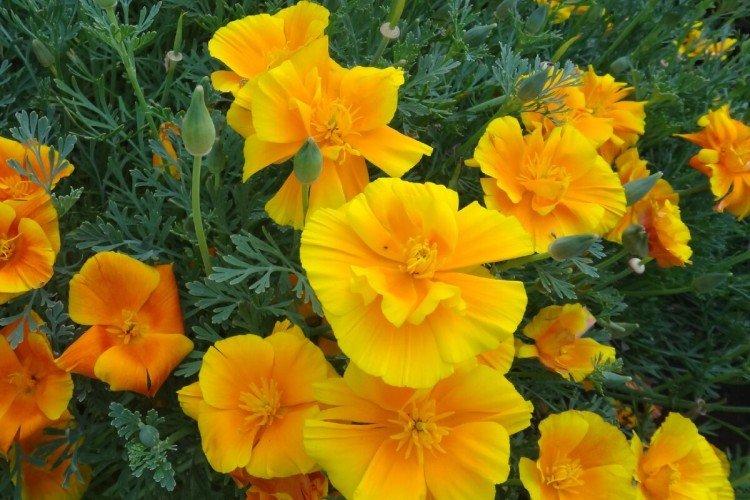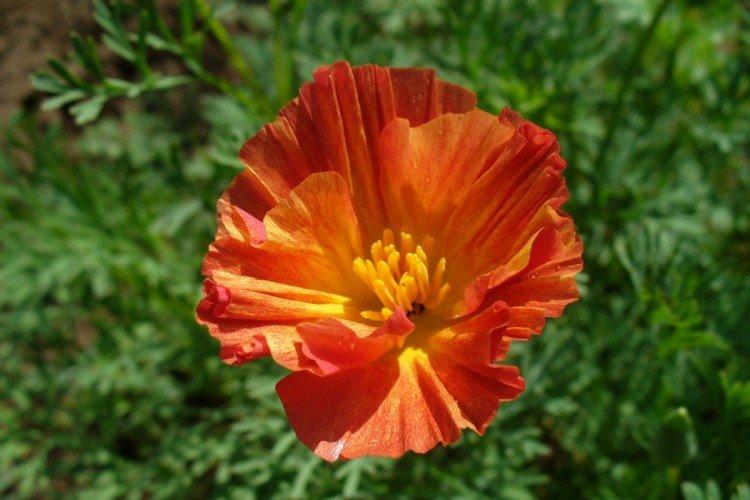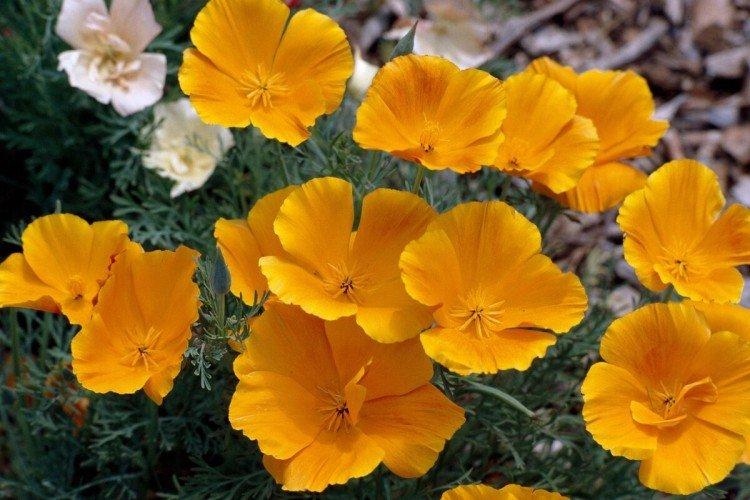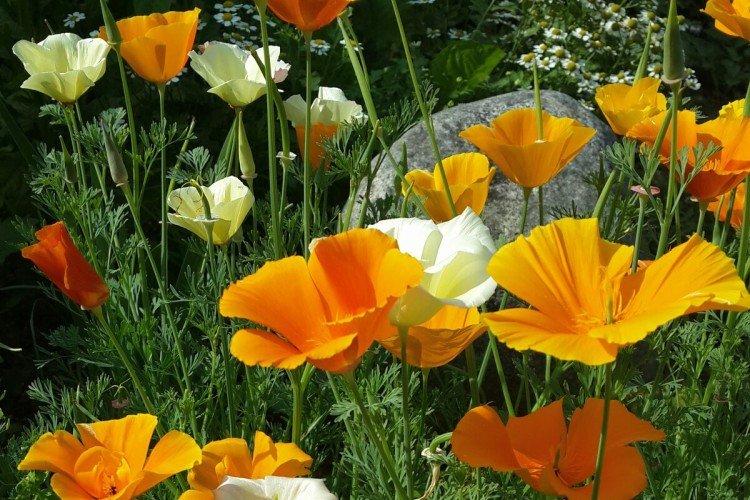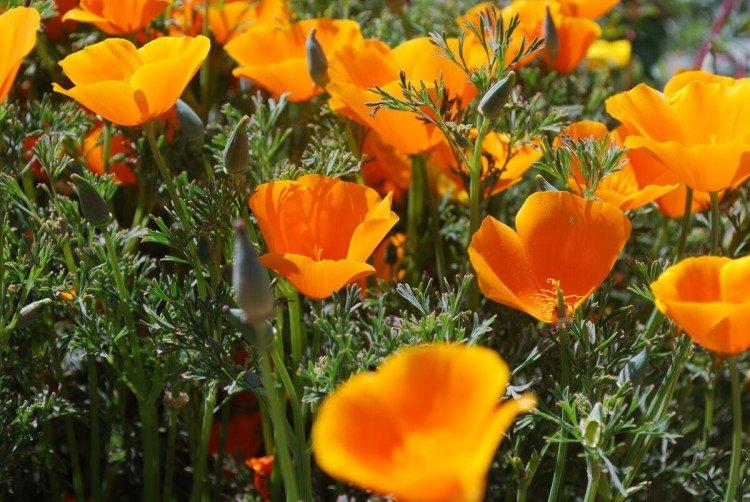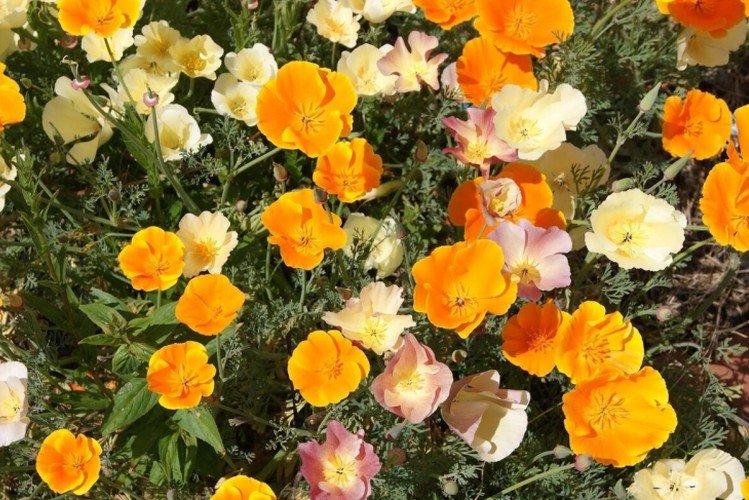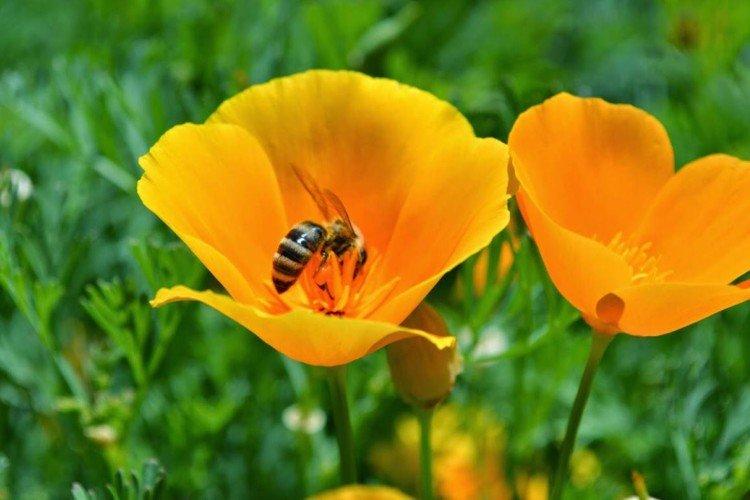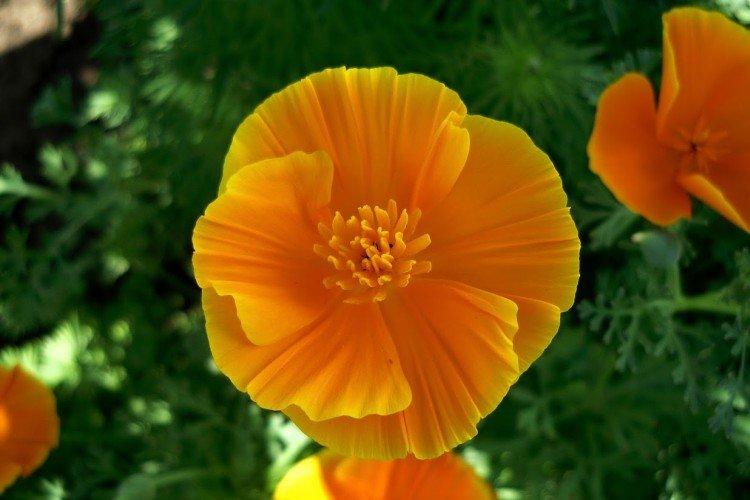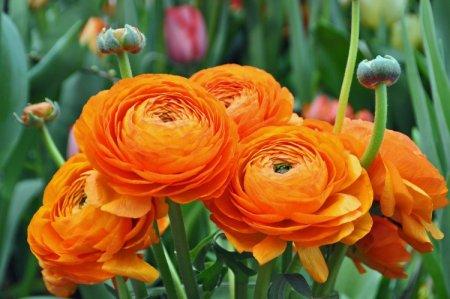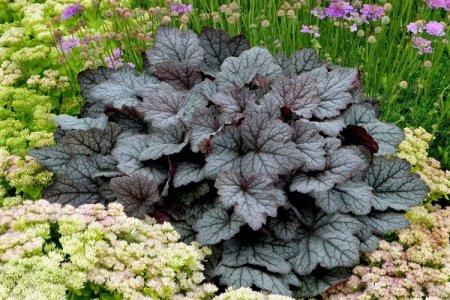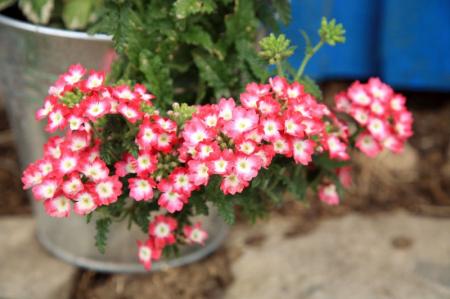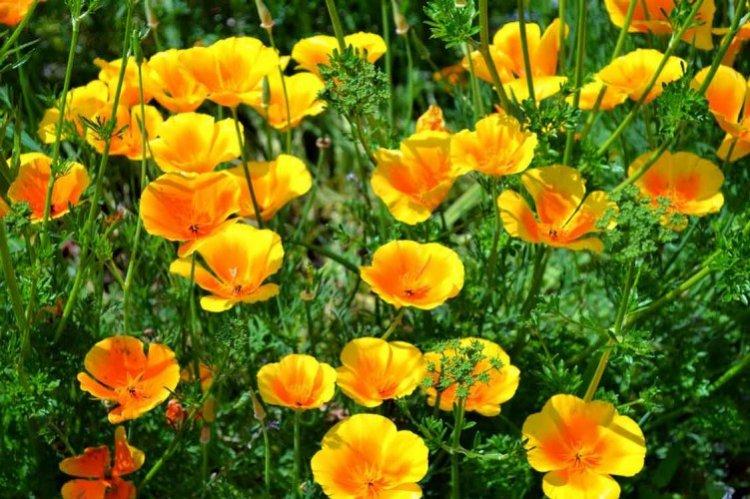
Delicate and graceful escholzia resembles a poppy, only a bright and rich golden hue. She came to us straight from her native California, and now she is actively planted for decorative and medicinal purposes. We talk in detail about the features, types and intricacies of the care of the escholzia!
general characteristics
Escholzia is a very delicate and graceful flower. She not only looks like a poppy, but in fact is its distant relative. It is a small branchy bush with beautiful openwork leaves and shiny flowers.
Each Escholzia flower lives only a few days, and only in sunny weather. But there are so many of them that even this is enough. On average, flowering lasts a very long time - from early summer to mid-autumn.
Not only flowers, but also leaves are distinguished by magnificent decorative qualities. They are covered with a bluish bloom and slightly resemble wormwood. The dense thickets of Escholzia are spectacular even without companion flowers.
According to legend, the golden flowers of the escholzia have misled gold diggers for years. The plant has thin, but very numerous shoots, and also a delicate but long taproot. Sensitive buds close on cloudy, cold, windy and rainy days.
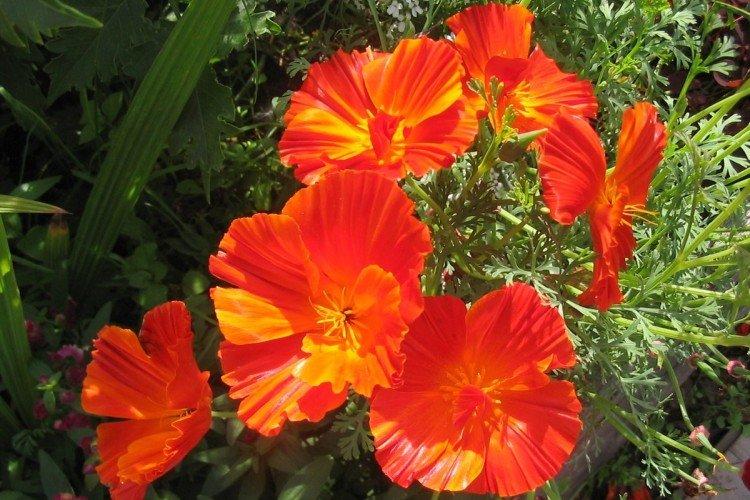
Types of escholzia
There are several dozen varieties of escholzia, but several of them are cultivated in our latitudes!
California escholzia
The most popular species in our latitudes, and it is she who is called the California poppy. The varieties are taller, and can grow up to 40 cm.The shoots are thin, but ribbed, and the flowers are single and cupped, up to 9 cm.
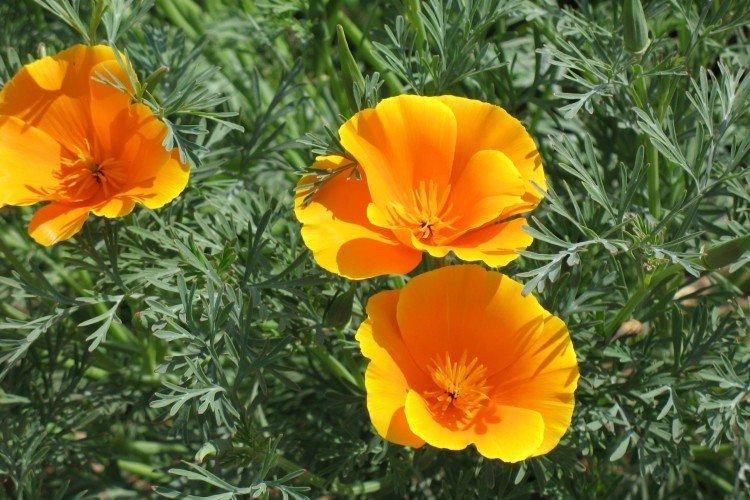
Soddy escholzia
A miniature herbaceous variety rarely grows above 15 cm.The leaves are collected in graceful rosettes with numerous peduncles and yellow flowers up to 3 cm.
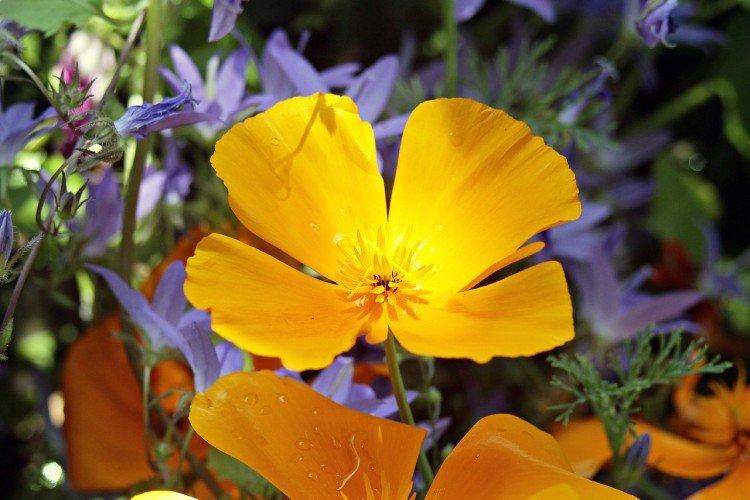
Apple blossom
One of the most popular varieties that attracts attention with large double flowers. It can still be recognized by its characteristic color, because the edges of the rich pink petals gradually lighten towards the middle.
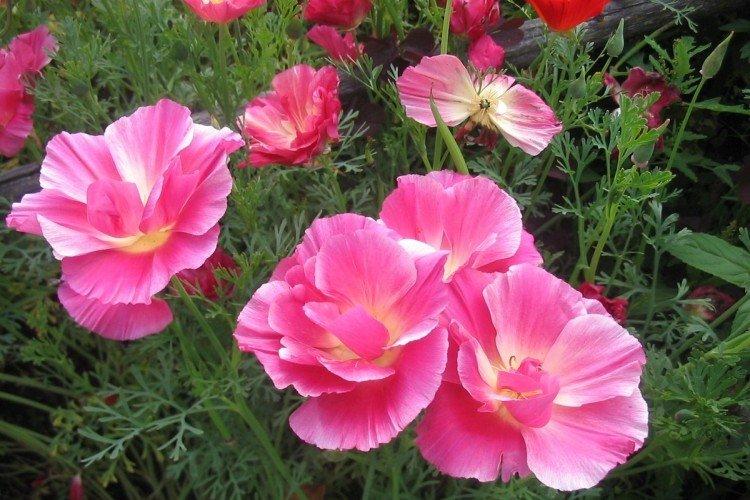
Eschsholzia Mikado
This variety was bred by breeders for lovers of delicate simple flowers. Moreover, they are quite large, up to 7 cm, and stand out with a bright orange center.
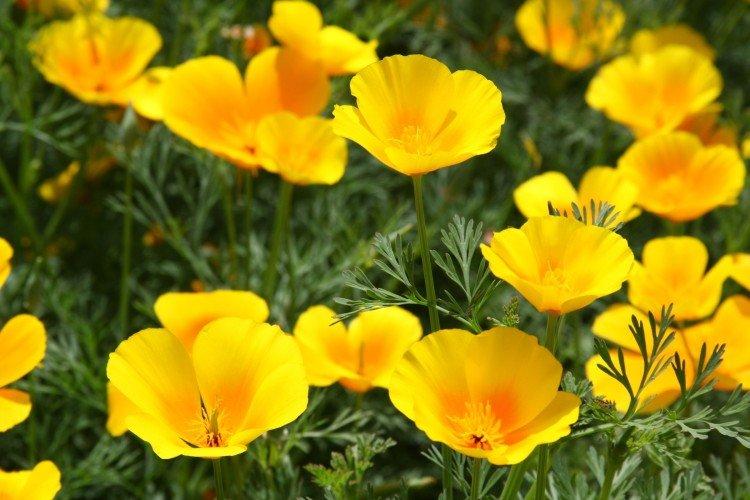
Fruit explosion
Another popular variety of Californian escholzia, and again the unusual structure of folded petals. There are many pink and crimson flowers.
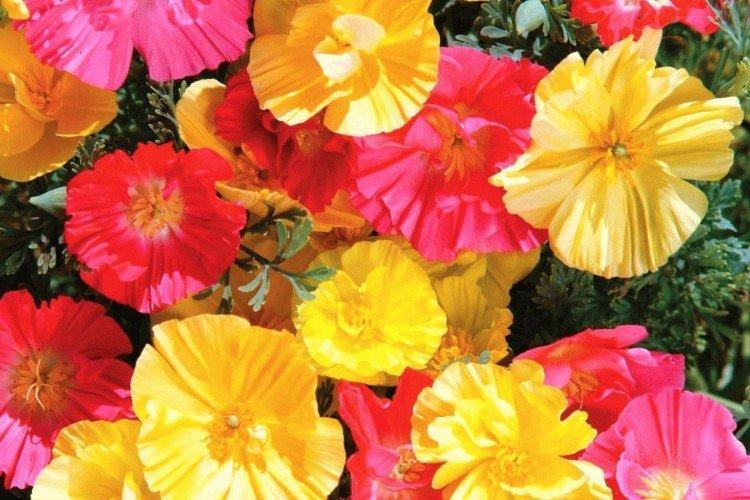
Eschsholzia Ballerina
A variety with gigantic, vibrant flowers. The diameter of the opened bud can reach 15 cm, which is not quite typical for escholzia. How can you resist such beauty?
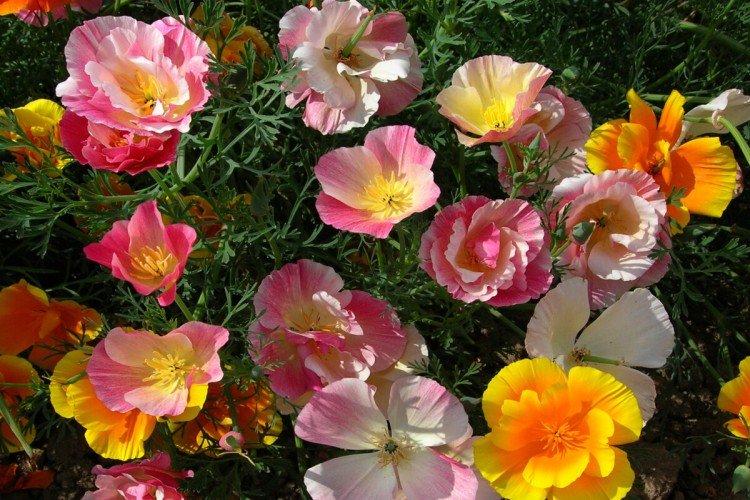
Escholzia care
There are only two main subtleties of caring for escholzia - do not overuse watering and immediately choose a permanent place for planting. In addition, keep in mind that the plant grows very densely, so it will be problematic to weed the flower bed.
Temperature
Eschsholzia does not like frost, which is why in colder regions it is planted as an annual. But with proper care, it will endure short-term frosts up to -5 degrees. But high temperatures do not scare her at all.
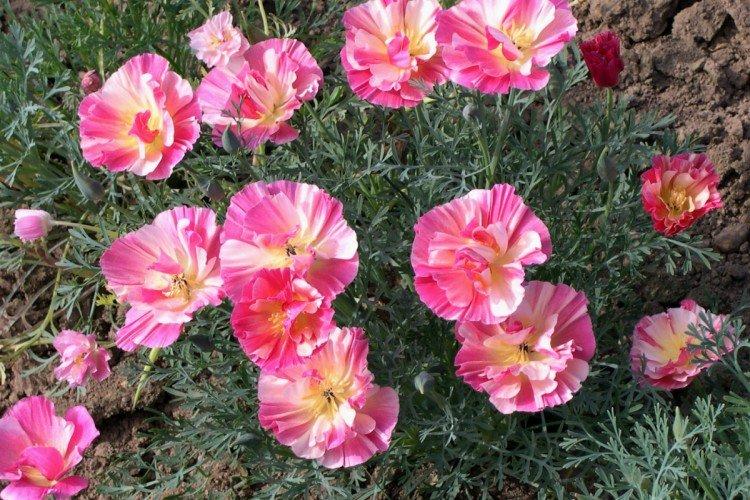
Lighting
Eschsholzia loves bright sunlight, so you can safely choose the most illuminated areas. She is not afraid even of direct sunlight in a sultry summer.
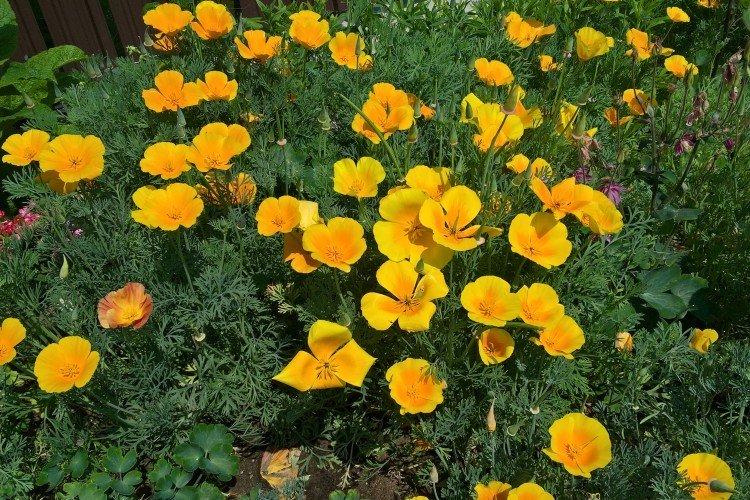
Watering
Too much watering is the main cause of all Escholzia diseases. It needs to be watered more or less intensively only when the drought is completely prolonged, and the soil is completely dry. Even in the hottest summer, you cannot fill the planting every day. Also choose the evening time for the procedure, when the buds have already closed.
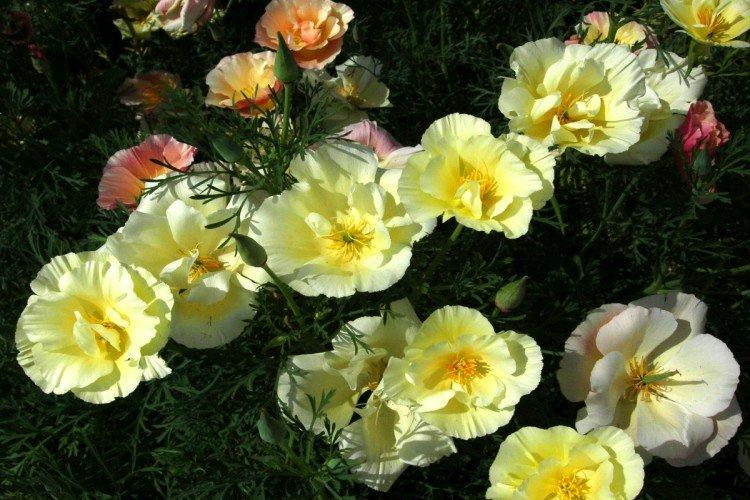
The soil
Escholzia does not tolerate acidic soils and close occurrence of groundwater. Before planting, it is imperative to loosen the area, and then slightly mulch small light seeds.The plant thrives in dry, infertile soil, where other garden flowers do not take root.
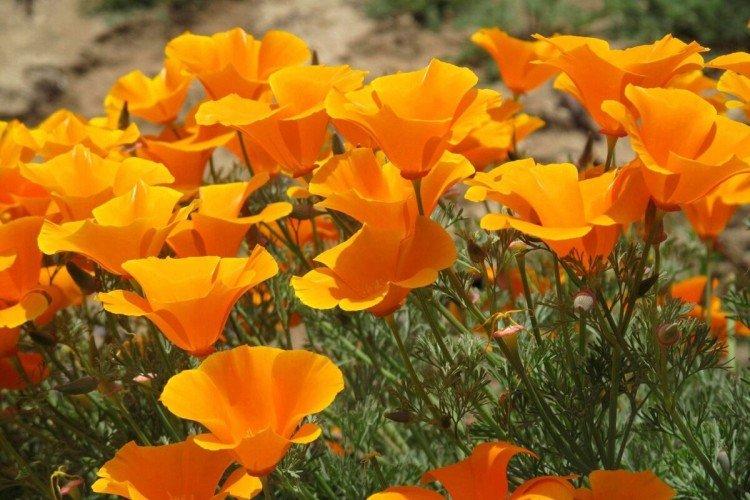
Fertilizers and feeding
Eschsholzia is not at all demanding for additional care. Moreover, you can even harm her this way. Reduce fertilization of plantings to a minimum, and in fertile soil it is better to do without feeding at all.
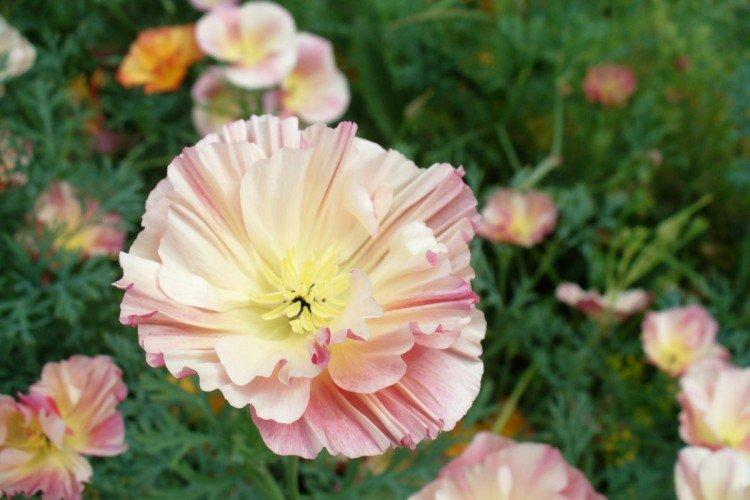
Pruning
Eschsholzia is a perennial, and should be pruned closer to winter. Feel free to cut off the entire ground part of the plant to make it even more beautiful in spring. And during flowering, it is important to remove damaged stems, wilted buds and old faded shoots in time. This is necessary for the escholzia to grow further.
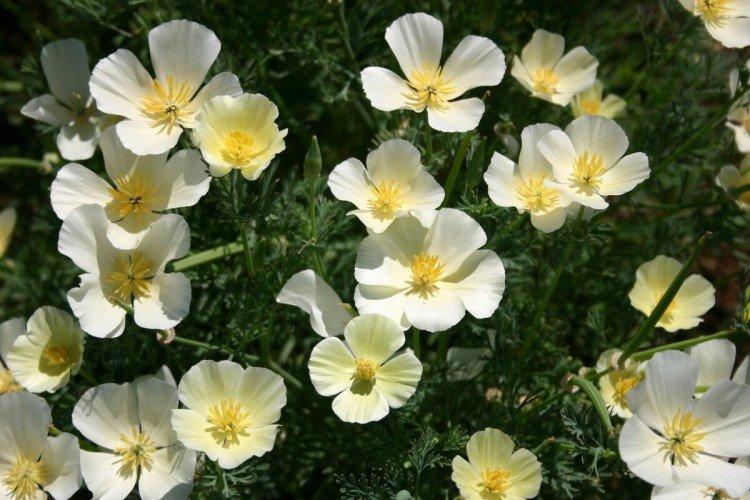
Planting and breeding escholzia
Due to the long, but fragile root system, which actively grows deeper, escholzia is not planted with seedlings. For reproduction, seeds are used that can be sown in early spring or in mid-autumn. Most often, sowing in the fall provides more abundant flowering, but then we recommend covering the seeds with a thick layer of leaves for the winter.
In the future, Echscholtia reproduces perfectly self-seeding at least in the next few years. So if the shape of the decorative composition is important to you, it will have to be thinned out regularly. By the way, the plant is thinned out during planting so that the seedlings grow at a distance of about 20 cm.
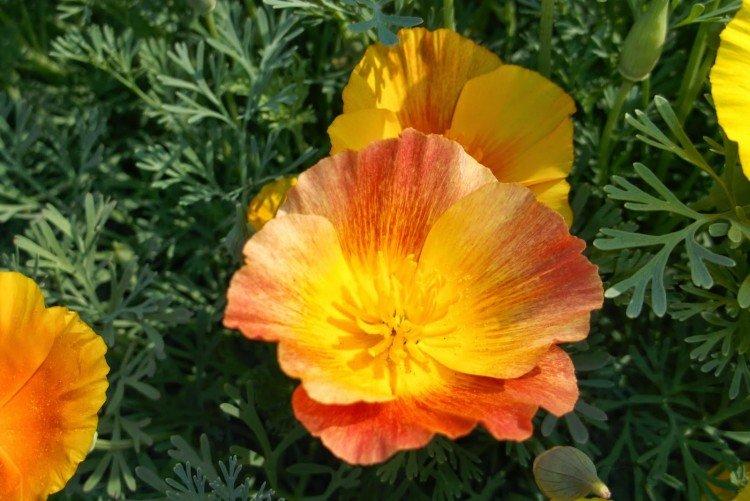
Pest and disease control
Escholzia is very fond of aphids, which often attack the delicate foliage in summer. If dry days last for a long time, this contributes to the appearance of spider mites. In both cases, you need to treat the plants with insecticides as soon as possible.
As for diseases, most often these are fungi and rot. And they develop due to improper watering. Eschsholzia is accustomed to living in dry regions, so it easily tolerates drought, but very badly - permanent bays. If suspicious symptoms appear, reduce watering as much as possible and use fungicides.
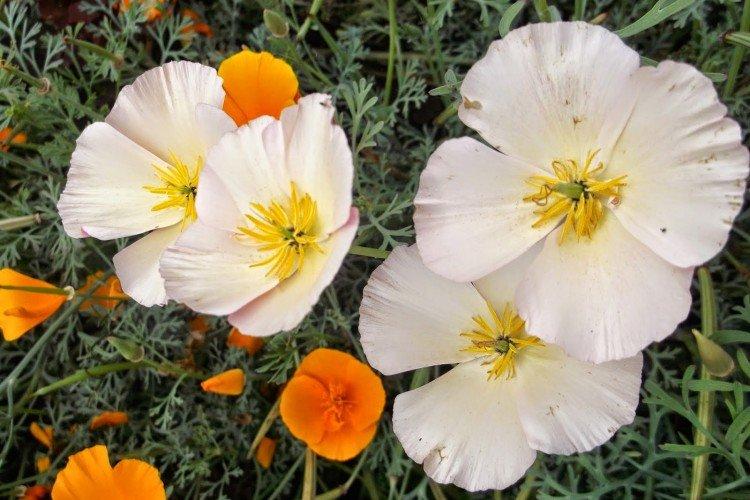
Eschsolzia - photo
Escholzia's delicate petals resemble butterfly wings that flutter in the wind. Just look how beautiful it is!
